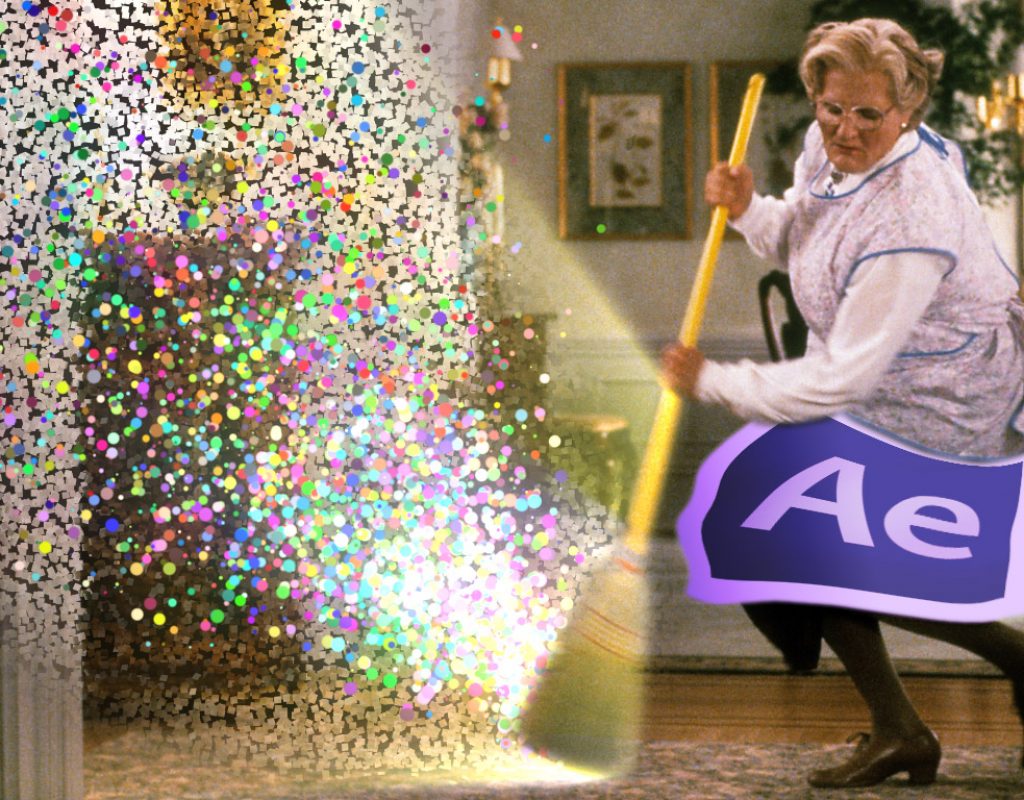Most pixels are pretty well behaved, but if you work in 32 bit mode then every so often you come across one that’s a born troublemaker. If parts of your HDR composition have simply disappeared, or blurs & glows behave as though they’ve been turned up to 11 million, then perhaps you’ve got a rogue pixel. Thankfully, a free plugin from fnord software can pull them into line and restore order to your project.
The world of linear 32 bit floating point compositing can sometimes seem a bit bizarre. It’s safe to say that the vast majority of After Effects users are working in 8 or 16 bit projects, and even if colour management is enabled then it’s usually set to sRGB. This is how After Effects works by default, and so it’s how After Effects users have come to learn the application. While there are many benefits to working with a project in linear 32 bit mode, making the change can be frustrating because everyday tools start to work differently.
When working in 32 bit mode, it’s not too difficult to understand that highlights preserve their details even if they are too bright too see. However there’s a whole host of other odd behaviors that can seem counter-intuitive, if not downright confusing. Because pixels can have negative values, blending modes can work in the opposite way to what you might expect – a layer set to “add” can make a composition darker, multiplying a layer can make it brighter. A curves adjustment might produce rainbow colours where there used to be white, and the screen blending mode can look plain wrong.
Although this can take some getting used to, most of these behaviors can be explained by the presence of pixels that are either brighter than white, or darker than black. The ability to preserve detail in highlights and shadows is one of the key benefits of working in 32 bit float, so once you recognize what’s happening you can adjust your workflow accordingly. For the average After Effects user, learning to always use the add blending mode instead of screen is the first HDR hurdle to clear.
Pixels that are brighter than white and darker than black take some getting used to, but they’re not a bad thing. Unfortunately though, the world of 32 bit float also has the potential for rogue pixels – numbers that are so far out of range that they are practically infinite – and the dreaded NaN, shorthand for “not a number”. If you think it’s unusual that a number can be “not a number” then you’re not alone, but it can happen and After Effects doesn’t like it either.
A single rogue pixel that is either infinite or not a number at all can cause a variety of artifacts in your composition. A blur or glow effect can make half the image disappear, and entire compositions can render out as black. Your composition might appear to be perfectly fine until you apply an effect or perhaps change blending modes, and then suddenly you’re scratching your head wondering where everything went.
Rogue pixels are generally produced by glitchy software. Personally, I’ve had encountered NaNs in 3D renders that used HDR image based lighting. Within After Effects, I’ve had Nan’s produced by both Lumetri and Trapcode’s Particular. The only clue is when parts of the composition suddenly disappear, but if you’re remarkably patient, scrolling the mouse pointer over black pixels may reveal the dreaded “NaN” in the info palette.
NaNs and Infs are rare, and they shouldn’t be there to begin with. You’ll only come across them if you work in 32 bit mode, and even then you might work for years and never have any problems. But if you do encounter one, you’ll want to know what to do.
Luckily, Brendan Bolles at fnord software recognized the need to tame these rogue pixels, and released a free plugin called NaNny. NaNny fixes those rogue pixels that might otherwise bring your composition to a halt, taming infinite values and otherwise fixing glitches. It shows up in the “Utility” menu, along with other HDR and colour correction tools.
Brendan wrote NaNny way back in 2011, but as After Effects continues to improve 32 bit workflows, more and more AE users are beginning to make the leap to 32 bit linear compositing. Despite it being a relatively unknown plugin, it’s becoming more and more relevant.
Downloading Brendan’s free NaNny plugin from the fnord website provides a quick, easy and best of all free solution to these unwanted glitches, and if you’re regularly working with 32 bit projects I cannot recommend it enough.
Hopefully you’ll never need it, but if you do, you’ll be thankful that Brendan was around to save the day. Again…

